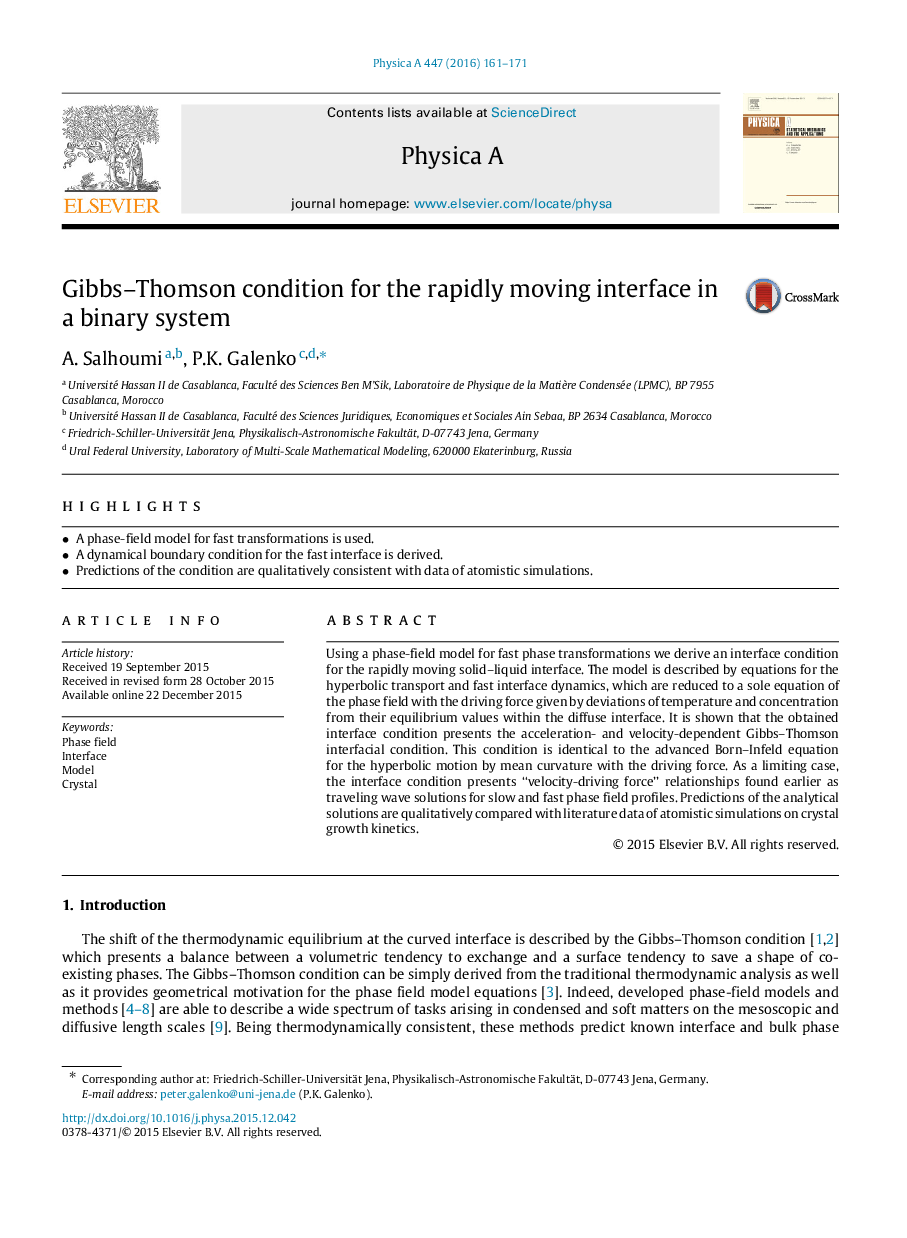| Article ID | Journal | Published Year | Pages | File Type |
|---|---|---|---|---|
| 977368 | Physica A: Statistical Mechanics and its Applications | 2016 | 11 Pages |
•A phase-field model for fast transformations is used.•A dynamical boundary condition for the fast interface is derived.•Predictions of the condition are qualitatively consistent with data of atomistic simulations.
Using a phase-field model for fast phase transformations we derive an interface condition for the rapidly moving solid–liquid interface. The model is described by equations for the hyperbolic transport and fast interface dynamics, which are reduced to a sole equation of the phase field with the driving force given by deviations of temperature and concentration from their equilibrium values within the diffuse interface. It is shown that the obtained interface condition presents the acceleration- and velocity-dependent Gibbs–Thomson interfacial condition. This condition is identical to the advanced Born–Infeld equation for the hyperbolic motion by mean curvature with the driving force. As a limiting case, the interface condition presents “velocity-driving force” relationships found earlier as traveling wave solutions for slow and fast phase field profiles. Predictions of the analytical solutions are qualitatively compared with literature data of atomistic simulations on crystal growth kinetics.
